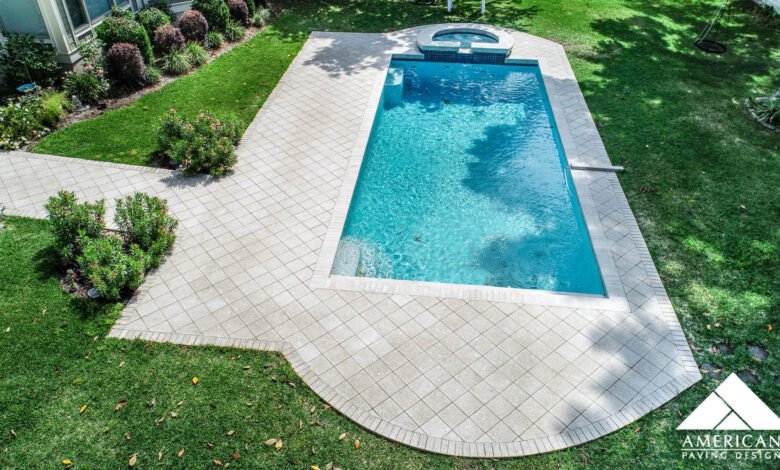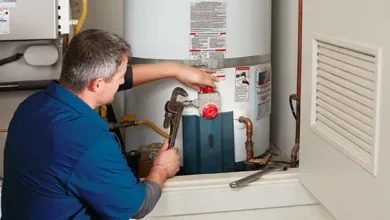Best Materials for Swimming Pool Pavers: What You Need to Know

A swimming pool is a great addition to any home, offering relaxation, entertainment, and a perfect way to cool off during hot summer days. However, choosing the right swimming pool pavers is crucial to ensure safety, durability, and aesthetic appeal.
This article will walk you through everything you need to know about selecting and installing the best pavers for your pool area.
Why Choose Swimming Pool Pavers?
Swimming pool pavers are specifically designed for pool areas, providing a slip-resistant, durable, and visually appealing surface. Here are some key benefits of using pool pavers:
- Slip Resistance – Reduces the risk of accidents around the pool.
- Heat Resistance – Keeps the surface cool even on hot days.
- Durability – Withstands water exposure and harsh weather conditions.
- Aesthetic Appeal – Available in various designs, colors, and materials.
- Easy Maintenance – Simple to clean and replace if damaged.
Types of Swimming Pool Pavers
There are various types of pool pavers, each with unique characteristics. Below are some of the most popular choices:
1. Travertine Pavers
Travertine is a natural stone with a porous surface, making it an excellent choice for poolside areas. It remains cool underfoot and offers a luxurious look.
2. Bluestone Pavers
Bluestone is a stylish and durable option that provides a non-slip surface. It comes in various shades of blue and grey, making it a popular choice for modern pools.
3. Concrete Pavers
Concrete pavers are budget-friendly and available in multiple colors and textures. They can mimic the look of natural stone while providing durability and ease of maintenance.
4. Porcelain Pavers
Porcelain pavers are non-porous, stain-resistant, and highly durable. They are ideal for those looking for a modern and sleek appearance.
5. Granite Pavers
Granite is an extremely hard and durable material, perfect for high-traffic pool areas. It resists scratches and stains, ensuring a long-lasting finish.
How to Choose the Best Pool Pavers?
Selecting the right pool pavers involves considering multiple factors:
1. Safety
Ensure the pavers are slip-resistant to prevent accidents around the pool.
2. Durability
Choose pavers that can withstand exposure to chlorine, saltwater, and varying weather conditions.
3. Aesthetic Appeal
Select a color and texture that complements your pool and outdoor space.
4. Maintenance
Opt for pavers that are easy to clean and replace if necessary.
5. Budget
Consider the cost of pavers and installation to find an option that fits your budget.
Steps to Install Swimming Pool Pavers
Installing pool pavers requires careful planning and execution. Follow these steps for a successful installation:
Step 1: Prepare the Area
- Clear the poolside area of debris and old surfaces.
- Level the ground to create an even foundation.
Step 2: Lay the Base Material
- Spread a layer of gravel or sand to create a stable base.
- Compact the base using a vibrating plate compactor.
Step 3: Position the Pavers
- Start from one corner and work your way across.
- Ensure even spacing for a uniform look.
Step 4: Cut Pavers to Fit
- Use a wet saw to cut pavers where necessary.
- Fit them tightly along the edges and curves of the pool.
Step 5: Secure the Pavers
- Use polymeric sand or mortar to lock the pavers in place.
- Sweep sand into the joints and compact the pavers.
Step 6: Seal the Pavers
- Apply a sealant to enhance durability and color retention.
- Allow the sealant to dry before using the area.
Tips for Maintaining Swimming Pool Pavers
- Regular Cleaning: Sweep and wash the pavers to remove dirt and debris.
- Weed Prevention: Use weed-resistant sand between the pavers.
- Stain Removal: Clean spills promptly to avoid stains.
- Resealing: Apply a new coat of sealant every few years for protection.
Conclusion
Choosing the right swimming pool pavers can enhance the beauty, safety, and durability of your pool area. Whether you prefer travertine, bluestone, concrete, porcelain, or granite, each option has unique benefits. By following proper installation and maintenance steps, you can enjoy a stunning and functional poolside space for years to come.




